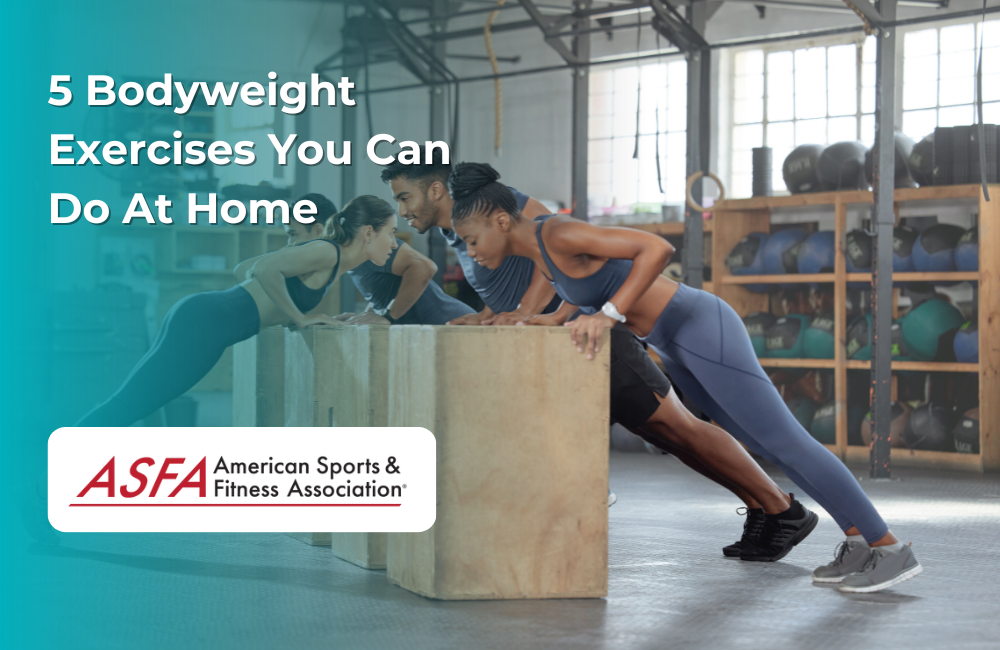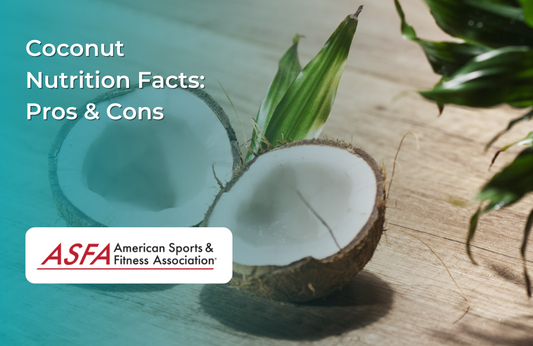Bodyweight exercises are strength-building and toning movements that utilize your own body weight for resistance, eliminating the need for free weights or machines. These exercises are ideal for individuals with busy schedules because they can be done anywhere without any equipment. Whether you’re at home or traveling, bodyweight exercises allow you to achieve your strength training goals from any location. Here are five of the best bodyweight exercises you can do at home, along with detailed instructions and benefits.
Why Bodyweight Exercises?
Convenience
-
No Equipment Needed: Can be performed anywhere, anytime.
-
Space Efficient: Requires minimal space, perfect for small apartments or hotel rooms.
Versatility
-
Adaptable: Exercises can be modified to suit any fitness level.
-
Comprehensive Workouts: Can target all major muscle groups for a whole body workout.
Effectiveness
-
Functional Fitness: Enhances everyday movements and activities.
-
Injury Prevention: Reduces the risk of injuries by strengthening stabilizing muscles.
1. Plank Hold
The plank is a fundamental core exercise that builds strength and stability throughout the entire body.
Benefits: Strengthens Core Muscles
-
Core Strength: Strengthens the core muscles, including the abs, lower back, and hips.
-
Functional Fitness: Enhances overall functional fitness and stability, crucial for daily activities.
-
Posture Improvement: Regular practice can improve posture and alleviate chronic lower back pain.
How to Perform:
-
Starting Position: Begin on your hands and knees with your arms extended, then lower onto your forearms. Your elbows should be directly beneath your shoulders, and your body should form a straight line from head to heels.
-
Engage Core: Tighten your core muscles and hold the position without allowing your hips to sag or rise.
-
Maintain Alignment: Keep your head, neck, and spine aligned. Avoid looking up or letting your head drop.
Variations:
-
Side Plank: Shift onto one forearm and rotate your body sideways, stacking your feet. This variation targets the obliques.
-
Plank with Leg Lift: While in a plank position, lift one leg off the ground, hold, and switch. This increases the challenge for the core and glutes.
-
Dynamic Plank: Alternate between forearms and hands to add a dynamic movement element.
Tips:
-
Alignment: Ensure your body forms a straight line from head to heels.
-
Breathing: Maintain steady breathing throughout the hold. Inhale through the nose and exhale through the mouth.
-
Modification: Drop to your knees if you need to reduce the intensity. Make sure your body stays in a straight line from your knees to your head.
2. Push-Ups
Push-ups are a classic bodyweight exercise that engages multiple muscle groups, making them a staple in any fitness routine.
Benefits:
-
Upper Body Strength: Strengthens the shoulders, arms, chest, and back.
-
Core Engagement: Engages the core muscles for stability, enhancing overall strength.
-
Versatility: Can be adapted for various fitness levels and goals.
How to Perform:
-
Starting Position: Begin in a plank position with your hands placed slightly wider than shoulder-width apart.
-
Lower Body: Lower your body until your chest nearly touches the floor, keeping your elbows close to your body.
-
Push Up: Push back up to the starting position, maintaining a straight line from head to heels.
Push-ups serve as a form of resistance training, effectively stimulating muscle adaptation and growth without the need for weights.
Variations:
-
Knee Push-Ups: Perform the push-up with your knees on the ground to reduce difficulty.
-
Incline Push-Ups: Place your hands on an elevated surface like a bench or step for an easier modification.
-
Decline Push-Ups: Place your feet on an elevated surface to increase difficulty and target the upper chest and shoulders.
Tips:
-
Form: Ensure your body stays in a straight line throughout the movement. Avoid letting your hips sag or rise.
-
Elbow Position: Keep your elbows at a 45-degree angle to your body to protect your shoulders.
-
Breathing: Inhale as you lower your body and exhale as you push up.
3. Squats
Squats are essential for building lower body strength and enhancing overall functional fitness.
Benefits:
-
Leg and Glute Strength: Promotes the growth of lean muscle in the legs and glutes.
-
Knee Protection: Strengthens the tissues around the knee joints, reducing injury risk.
-
Functional Fitness: Improves overall stability and functional fitness, crucial for everyday activities.
How to Perform:
-
Starting Position: Stand with feet shoulder-width apart, toes slightly turned out.
-
Lower Body: Bend your knees and lower your hips as if sitting back into a chair, keeping your chest up and back straight. Ensure your knees are bent and feet flat to maintain proper alignment.
-
Rise Up: Push through your heels to return to the starting position.
Variations:
-
Jump Squats: Add a jump at the end of the squat for a cardio boost and explosive power.
-
Pistol Squats: Perform a single-leg squat to increase difficulty and focus on balance and strength.
-
Sumo Squats: Stand with feet wider than shoulder-width apart and toes turned out. This variation targets the inner thighs.
Tips:
-
Depth: Lower your hips until your thighs are parallel to the ground or as far as your flexibility allows.
-
Alignment: Keep your knees in line with your toes to avoid injury.
-
Core Engagement: Tighten your core throughout the movement for better balance and support.
4. Lunges
Lunges are a versatile lower body exercise that can enhance balance, stability, and strength.
Benefits:
-
Lower Body Strength: Strengthens the legs and glutes, enhancing muscle tone. Lunges also help to build muscle mass by incorporating progressive overload and varying intensity levels.
-
Joint Protection: Increases protective tissue around the knee and hip joints, reducing injury risk.
-
Balance and Stability: Improves balance and overall stability, crucial for daily activities.
How to Perform:
-
Starting Position: Stand with feet together.
-
Step Forward: Step forward with one leg and lower your hips until both knees are bent at 90-degree angles.
-
Push Back: Push through the front heel to return to the starting position.
-
Alternate: Repeat with the other leg.
Variations:
-
Reverse Lunges: Step backward instead of forward to reduce strain on the knees.
-
Walking Lunges: Perform lunges while walking forward, adding a dynamic movement element.
-
Lateral Lunges: Step to the side, bending one knee while keeping the other leg straight. This targets the inner and outer thighs.
Tips:
-
Alignment: Ensure your front knee is directly above your ankle and does not extend past your toes.
-
Core Stability: Engage your core for better balance and support.
-
Depth: Lower your back knee as close to the ground as possible without touching it.
5. Burpees
Burpees are a high-intensity full-body exercise that combines strength training and cardio.
Benefits:
-
Full Body Workout: Engages multiple muscle groups, including the arms, chest, core, and legs.
-
Core Strength: Builds core strength and teaches the muscles to react quickly.
-
Power and Speed: Improves power and speed, beneficial for endurance athletes and overall fitness.
-
Muscle Mass: Burpees help to increase muscle mass by engaging multiple muscle groups and incorporating progressive overload techniques.
How to Perform:
-
Starting Position: Stand with your feet shoulder-width apart.
-
Squat Down: Lower into a squat position and place your hands on the ground.
-
Kick Back: Kick your feet back into a plank position.
-
Push-Up: Perform a push-up (optional for beginners).
-
Return to Squat: Jump your feet back to the squat position.
-
Jump Up: Explode up into a jump with your arms overhead.
Variations:
-
Half Burpee: Skip the push-up and jump for a less intense version.
-
Mountain Climbers Burpee: Add mountain climbers while in the plank position for extra core work.
-
Burpee Box Jump: Perform a burpee and finish with a box jump for added difficulty.
Tips:
-
Pace: Perform the movement at a steady pace to maintain form.
-
Modification: Remove the push-up or jump if you need to reduce intensity.
-
Breathing: Exhale during exertion (jumping up) and inhale during relaxation phases (returning to squat).
Creating a Home Workout Plan
Benefits: Increases Muscle Mass
-
Minimal Space: Requires minimal space and no equipment.
-
Flexibility: Can be tailored to fit any schedule or fitness level.
-
Cost-Effective: Eliminates the need for a gym membership or expensive equipment.
Having structured workout routines is crucial as they cater to different fitness levels, particularly for beginners, and help ensure continuous progress in your fitness journey.
Tips:
-
Set Goals: Identify your fitness goals and create a plan to achieve them.
-
Seek Professional Guidance: Consider consulting a personal fitness trainer to create a tailored workout program. Many trainers offer virtual sessions and use fitness apps to demonstrate exercises and track progress.
-
Stay Consistent: Consistency is key to seeing results. Aim to perform these exercises regularly, adjusting intensity and duration as needed.
-
Monitor Progress: Keep track of your progress by noting the number of repetitions, duration, and any variations you incorporate.
Conclusion
Bodyweight exercises offer a versatile and effective way to build strength and tone muscles without the need for equipment. Whether you’re at home or traveling, bodyweight workouts can help you achieve your fitness goals. Incorporate plank holds, push-ups, squats, lunges, and burpees into your routine for a comprehensive full-body workout. For a personalized plan, consider seeking guidance from a fitness professional. Stay consistent, monitor your progress, and enjoy the benefits of a stronger, healthier body.





